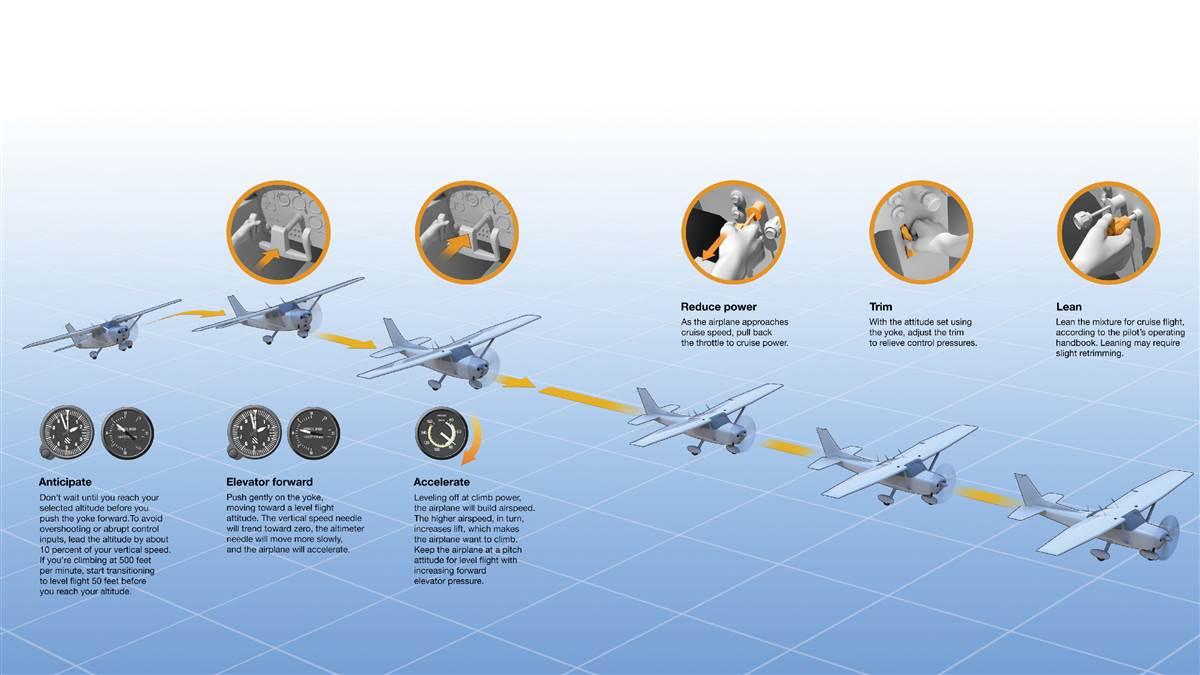Technique: The Level-Off
Go from climb to cruise with precision
Step to it
The myth of ‘on the step’
Some pilots intentionally overshoot their planned altitude, believing that the speed gained in the descent back to cruise altitude will result in a slightly higher cruise speed. Called flying “on the step,” this technique probably originates from boating. But when it comes to flying “on the step,” don’t believe the hype. AOPA put the theory to the test with two identically equipped Cessna 172s and found they performed identically when one leveled off at the target altitude and the other descended on the step. —SD
Web: www.aopa.org/pilot/onthestep
How high?
VFR cruising altitudes
1. When flying more than 3,000 feet above the surface but below 18,000 feet mean sea level, on a magnetic course of zero degrees through 179 degrees, use an odd thousand-foot altitude above mean sea level plus 500 feet. Examples are 3,500 feet, 5,500 feet, and 7,500 feet.
2. When flying on a magnetic course of 180 degrees through 359 degrees, use any even thousand-foot altitude plus 500 feet. Examples are 4,500 feet, 6,500 feet, and 8,500 feet.




